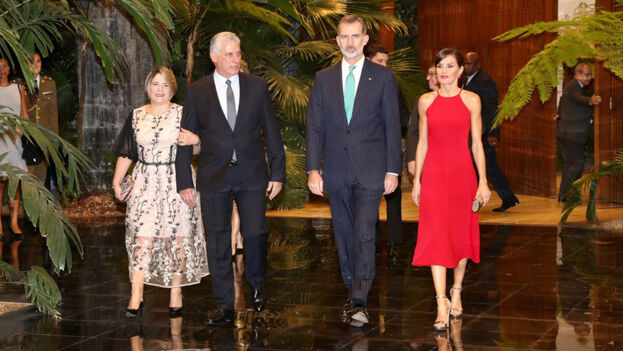
![]() 14ymedio, Yoani Sanchez, Generation Y, Havana, 17 November 2019 — Havana was a city of carnivals and masks. Although the times of revelry passed long ago, this city is covered – whenever necessary – with convenient layers of makeup. Years ago, when a pope visited the island, the authorities painted the facades and cleaned the streets through which the caravan of His Holiness would travel from the airport to the historic center, a partial restoration that did not escape popular humor, which renamed the route la vía Sacra, the Sacred Way.
14ymedio, Yoani Sanchez, Generation Y, Havana, 17 November 2019 — Havana was a city of carnivals and masks. Although the times of revelry passed long ago, this city is covered – whenever necessary – with convenient layers of makeup. Years ago, when a pope visited the island, the authorities painted the facades and cleaned the streets through which the caravan of His Holiness would travel from the airport to the historic center, a partial restoration that did not escape popular humor, which renamed the route la vía Sacra, the Sacred Way.
Another example of the capacity for masking are all those thousands, millions of photos made by tourists in which the only things that appear are an old Chevrolet of the last century, restored buildings, and mojitos with a lot of rum and little memory. To know the city that beats underneath you have to remove layers like peeling an onion, or use the corrosive makeup remover of objectivity. Unfortunately, only a few visitors are willing to work in facial and cultural archeology. At the end of the day they come for a short time, for a time that is only a sigh.
This November, the rouge has again been smeared over a city with more than two million inhabitants which has arrived at 500th year since its founding. “Facial” touch-ups have included the collection and mass slaughter of stray dogs, the inauguration of some architectural works that had been under repair for years, and a ban on dissidents and activists to going outside on the eve and the day of celebration of the celebration of the half-millennium of the Villa of San Cristóbal de La Habana.
But even if they had only applied a thin layer of lipstick, the Spanish royals Felipe VI and Letizia Ortiz would have been unable to discover very much on their two-day state visit to the Island. With an agenda planned millimetrically, their majesties could barely get away from the scheduled streets, prepared scenes and filtered guests. Even in their meeting with representatives of civil society, missing were human rights activists, opposition leaders and even independent journalists from the media most stigmatized by the ruling party.
However, like with the best makeup, sometimes a brief tear spoils everything. Cosmetics turned out to be too little cover reality and on the day when the Spanish royals strolled through Old Havana a street dog managed to cross in front of the royal couple and sneak into a photo of this visit, a nod perhaps to all those others who had died to “clean” the image of a city where an Animal Protection Law remains a painful chimera.
The national cleaning for the visit and the celebrations also included the arrest of uncomfortable citizens, those in the style of the artist Luis Manuel Otero Alcántara. Weeks before, and as part of the daily lack of rights, the independent journalist Roberto Quiñones and the opposition leader José Daniel Ferrer had been locked up and continue to be held, so far without the intermediation of international organizations nor a hypothetical request for clemency from the Spanish Crown.
Havana, like all Cuba, is a sequence of makeup and masks. On the epidermis, very high, are the bright colors of the ruling party; but below – with just the slightest scraping – emerges the hard gray of reality, the dark shadow of a country dominated by an authoritarianism without shades.
_______________________
Note: This article was initially published in Deutsche Welle in Spanish and is reproduced in this blog.
COLLABORATE WITH OUR WORK: The 14ymedio team is committed to practicing serious journalism that reflects Cuba’s reality in all its depth. Thank you for joining us on this long journey. We invite you to continue supporting us by becoming a member of 14ymedio now. Together we can continue transforming journalism in Cuba.
